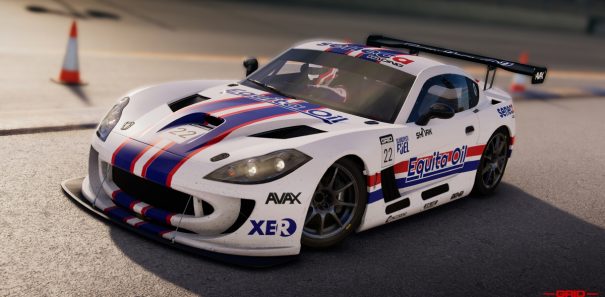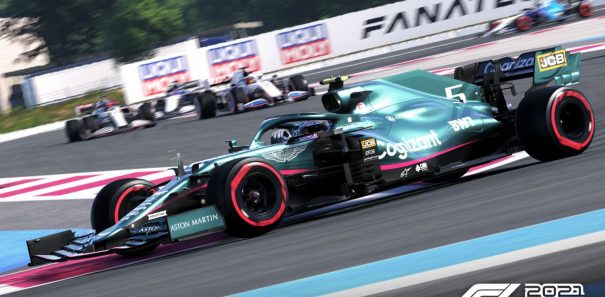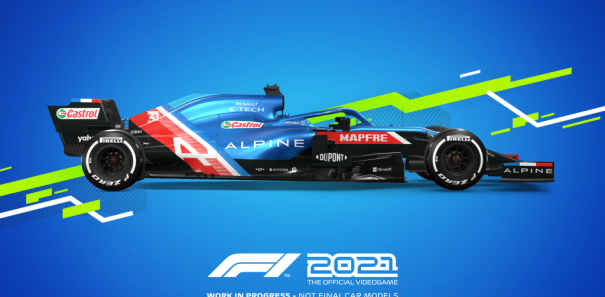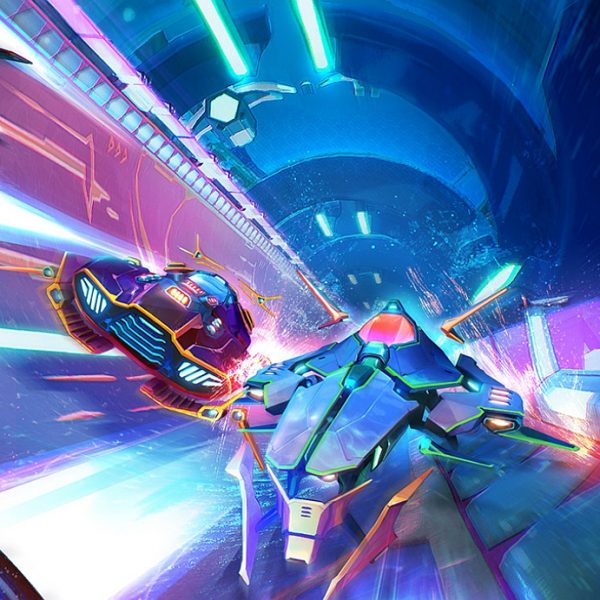In just over a week’s time, Codemasters Racing’s much-anticipated arcade racing game ‘Grid 2’ will – after what seems like an absolute age – finally go on sale in the UK.
With the pre-launch buzz surrounding the upcoming title, though, it’s very easy to forget about its six-year old predecessor: the critically-acclaimed racing game star of the seventh-gen, Race Driver: Grid.
At least, that’s what most of the folk who reviewed the title in 2008 reckoned Grid was. The question, though, is this: Does Race Driver: Grid still have what it takes to be described as one of the top racing games of the last six years, or has misty-eyed nostalgia tainted our memories and perception of an out-dated game?
By the end of this review, the answer will hopefully be found…
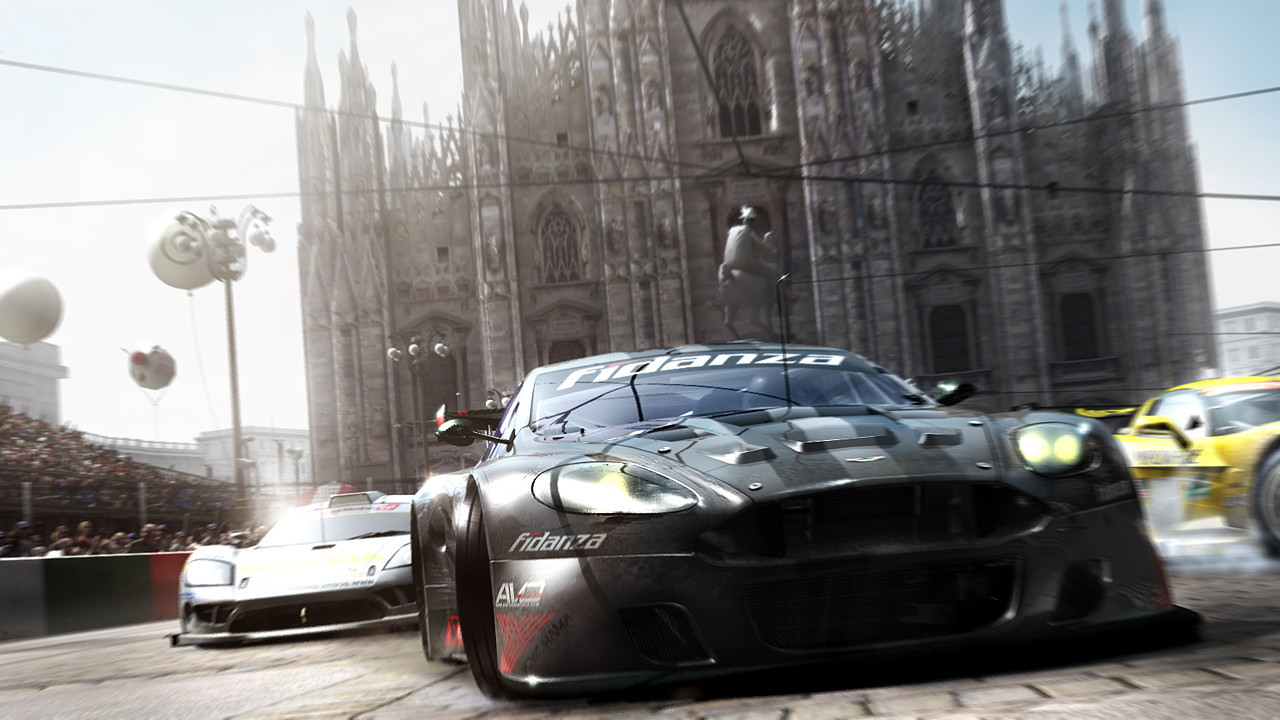
From Rags to Top-tier Racing Riches
Even when Race Driver: Grid was released, the ‘move your way up the ranks’ progression system was already a career-mode template that had formed the foundations for most racing games, so we’d be deceiving you if we were to say Grid’s campaign mode brought anything radical or new to the genre.
Neither was its length anything to brag about either – if you restricted yourself to an hour or two a day on Grid, as I did when I played through the game for this Retrospective Review, it would still be possible to complete Race Driver in the space of a couple of months at the most. As far as replayability goes, Grid isn’t exactly the standard bearer for racing games.
What did make Race Driver: Grid interesting, though, was how your playable character progressed through the ranks and the various tiers of racing, both on and off the track.
Though you start off as a wannabe racer who can only enter events in one-race, target-specific freelance contracts, the grind to bolster up your bank balance with enough dosh to start your own team doesn’t take much time at all, and you’ll be off traversing the USA, Europe and Japan in no time at all, building up your reputation and money as you climb up the ranks.
When you’re not racing, though, there’s the team management aspect, which allows you to edit your livery, paint scheme and sponsors, as well as hire a second driver once you progress beyond the ‘Rookie’ stage. And, whilst the whole CEO aspect is no-where near as deep as other racing games (albeit more recent ones, like F1 Online: The Game), sorting out which brands will appear on your collection of track-ready machinery is a novel touch, and the only maintenance aspect that’s worth going back to time-and-time again, given it (unsurprisingly) plays a huge role in the game’s economy.
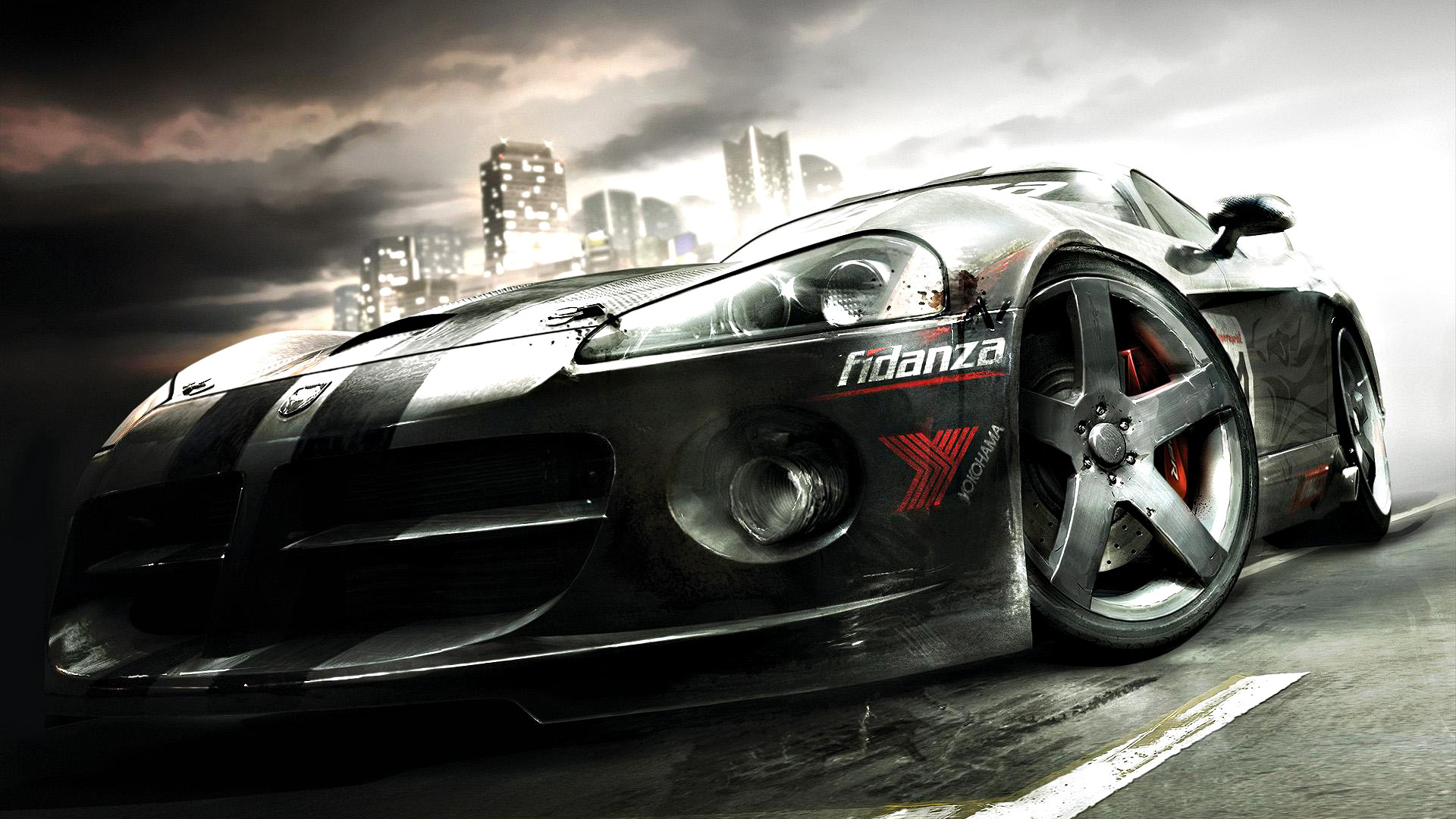
More Arcade than Sim…but does it really matter?
Let’s not beat around the bush, shall we? Whilst it’s nowhere near as much of an arcade racer as, say, an OutRun or Ridge Racer, Race Driver: Grid is by no means a simulation title. If Gran Turismo 5 is the Flight Simulator of console racing games, then Grid is the market’s equivalent of Ace Combat.
As a result, it shouldn’t be surprising to hear of user reviews across the Internet that criticise the game’s ‘floaty’ physics. Sure, more people can pick up and play Race Driver this way, but for gamers who wish to push themselves and the car they’re driving to the absolute limit, the vague sense of the ‘rubber meeting the road’ is quite disconcerting, and (from this reviewer’s experience) makes it too easy to make mistakes.
And become incredibly frustrated as a result.
Where Grid redeems itself is that, whilst it isn’t the most accurate portrayer of realism, there are few games that can top Race Driver for pure excitement and drama. The traits of car control may be off, but Grid still stands strong as one of the handful of titles that replicates the thrills of on-track action.
In fact, the only 7th gen console titles that come anywhere close to matching Grid’s ability to paint a picture of what it’s actually like to jostle for places in true, chaotic, almost BTTC-esque fashion are the two entries in the Need for Speed: Shift series. Which is perhaps more a sign that there are very few games out there that focus on this aspect of the genre, rather than how sterile some racing series’ seem to have become over the years…
If I Could Turn Back Time…
One of Grid’s features that Codemasters was particularly proud of when the game shipped was, as we’re sure you know, the “Flashback” option; the in-game device that let you rewind time by a few seconds to correct any mistakes made on the track.
Whilst Codies might like to think they pioneered the device, the reality is they didn’t: WRC3 and MotoGP ’13 developers Milestone beat them to that in 2005 in their “Tiger Mode” for SCAR: “Squadra Corse Alfa Romeo.
Given SCAR wasn’t a massive critical or commercial success, though, we will give Codemasters the credit of making the feature more prominent in racing games: Squadra Corse may have been the innovator, but Race Driver: Grid was the populariser; the one that lead to the rewind feature being adopted by other games and developers, like the more recent titles in the Forza series.
For me personally, though, the reincarnation of Milestone’s “Tiger Mode” in a more mainstream product and marketplace isn’t the feature that brings back the fondest of memories. That accolade belongs to the replay cameras.
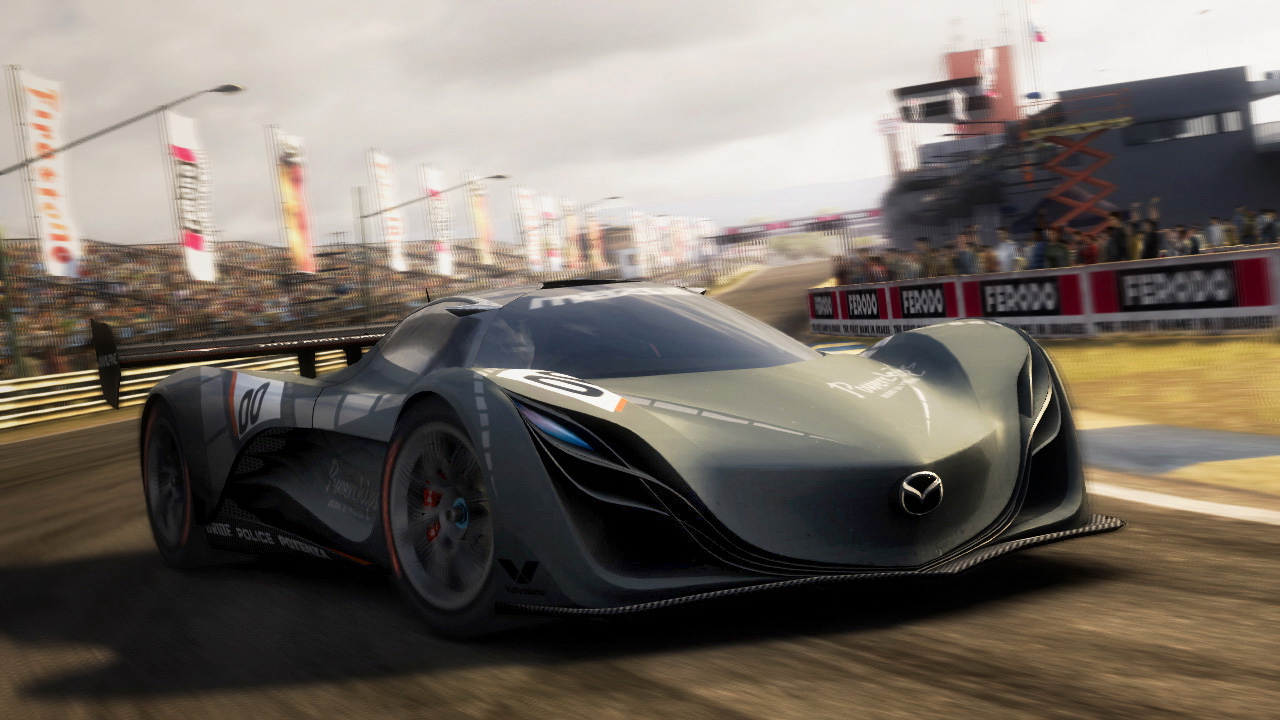
From the moment I viewed my incompetent first efforts on the Grid demo through the virtual lenses of the game’s replay cameras, it became apparent to me that Codemasters had hit the sweetspot when it came to transferring the on-track carnage into a cinematic form.
It’s so hard to describe it all, other than by simply saying it’s incredibly visceral. Hardly any replay shots are ever static – they’re always moving, whether they’re fixed shots and akin to invisible GoPros, or reverberating as they pan alongside the track, following your God-knows-how-many-miles-per-hour blast down the long back straight.
Oh, and the fast-paced, heartbeat-raising heavy beats of the replay music certainly goes some way to making them more exciting to behold.
Put simply, even today, Grid’s replays are truly incredible to watch. So you can only imagine what they must have been like to the gaming community when we witnessed them first hand, at the dawn of the new high-definition console generation!
They really are the standard bearer of which the industry can be capable of. And, going on what we’ve seen of Grid 2 so far, it looks like the “Best Ever Replays in a Racing Game” gong is still firmly in the hands of Race Driver…
Damage, damage…oh, and more damage!
With six years separating it and Grid 2, there’s no denying that Race Driver: Grid’s sequel does make Codemasters’ one-time flagship title look pretty dated. The colour palette and Codemasters’ choice of filter for the visuals lacks the vibrancy of more modern racers, some textures do look very crude by today’s standards and, upon closer inspection, those logos you can apply to your car can look incredibly blocky and pixelated at times.
Put simply, if there’s any area where Race Driver shows its age the most, it’s in the graphics department.
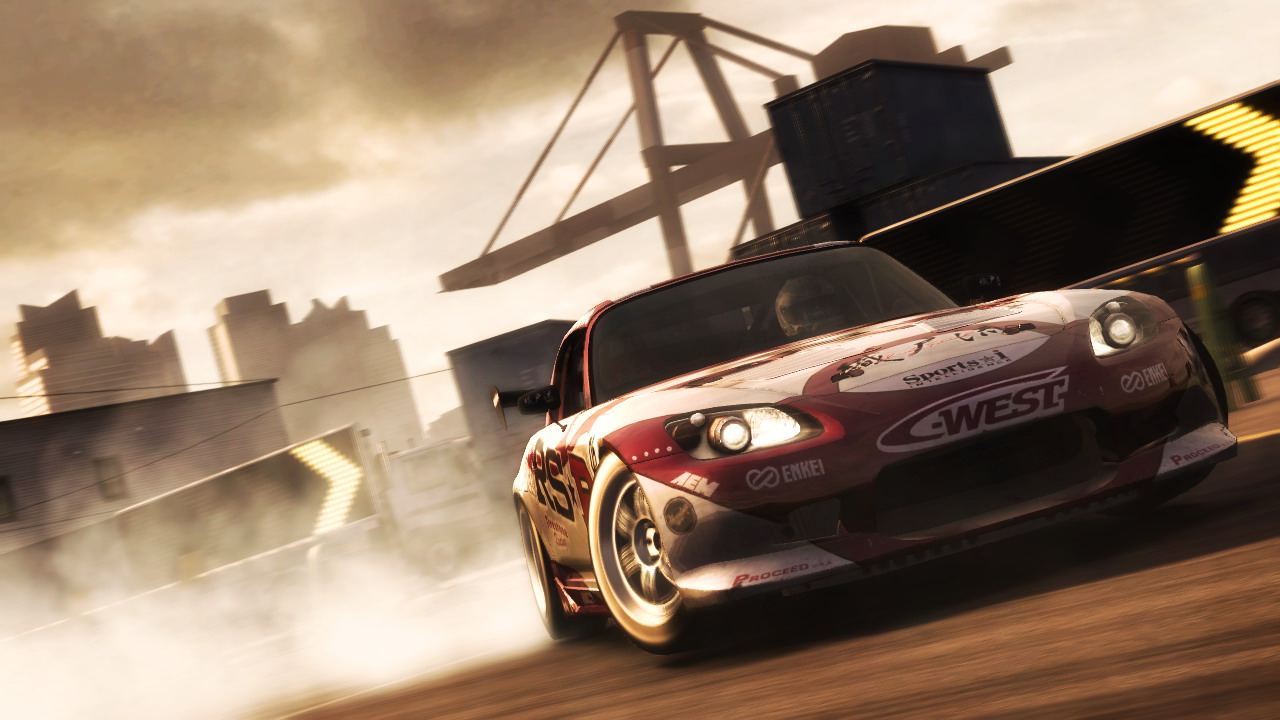
That’s not to say Grid Mk 1 is a horrid game to look at, though. Sure, the wow factor when we first clapped eyes on it back in 2008 is no longer there, but it still holds up (just) to the modern day crowd. The detailing of the car models and the environments still hold up fairly well, and I can’t put my finger on what makes me prefer the menu system in Grid over, say, F1 2012’s.
Even the frame rate remained silky smooth in this reviewer’s experience, with hardly any slow-down or screen tearing unless there’s a ton of stuff going on in the screen.
Where Race Driver can still hold its own with even the latest crop of racing games is the damage modelling. Which, given only 43 cars came stamped onto the disc on launch day, and manufacturers generally don’t want to see their cars absolutely totalled in racing games, probably goes to show just how ferocious the damage aspect really was!
Visually, it’s awe inspiring. Everything from scrapes and scuffs to dents in body panels, shattered windows, doors being torn from their hinges, wheels yanked from their suspension mounts and even the ability to completely incapacitate your car are possible when things get…erm…”interesting” out on track.
And, whilst Grid excels when it’s being what Michael Bay would most likely envision if he were to swap the directors’ seat for a role at a video game developer, the smaller damage details do stack up fairly well. Whilst it’s debateable if these more minor effects actually alter the way the car drives, it’s little touches – such as mildly misaligned suspension components groaning under hard cornering – that further solidify the point that, despite not being an out-and-out sim, Grid does a stern job at replicating the nuances of motorsport from the driver’s seat.
In fact, given we’re talking about the visuals and the damage engine in a game that originates from an era that’s soon to become a footnote in the history of gaming, this is possibly enough to explain why so many have such fond memories of the original Grid.
Conclusion
It would be unfair of me to rate Race Driver: Grid from a 2013 stand point. Whilst there are still areas where the title stands strong, even amongst its current contemporaries, Grid 1 has had its time in the spotlight.
You’ll also have to factor in the other deficiencies to the title that are time sensitive – like the visuals – that, whilst not entirely deal breaking, do go some way in the overall rating for the game.

However, if this were a brand-new game, I wouldn’t hesitate for a moment in giving Grid a solid 7/10 score. Perhaps even an 8/10, if I were in a particularly happy, jubilant mood on the day I was reviewing Race Driver.
And, whilst both those scores are slightly off what some critics thought of the title in 2008 – Metacritc currently showcases an 87% aggregated score for the title on all platforms – it’s more down to déjà vu (this may be a retrospective review, but this is by no means the first time I’ve ever played Grid) than the title being shoddy.
On the contrary, Race Driver still stands up well after six years, with some aspects being able to show even a handful of modern-day franchises a thing or two about how to implement features properly, such as that amazing damage engine.
Need evidence for the claim? Two words and a number for you: Gran. Turismo. 5.
Of course, Grid has its faults. Even when it was brand new, Race Driver wasn’t a perfect game, so expecting it to be as amazing and as exemplary as it was in the previous decade simply wasn’t going to happen.
But there is enough substance here to see why Grid has harboured such a following, even though it’s only one game in the now seemingly defunct “Race Driver” series.
And that brings me nicely to answering the “Has six years clouded our judgement on Grid?” question that forms the bedrock of this retrospective review: whilst those boots that Grid 2 has to fill aren’t quite as big as its predecessor’s critical acclaim from six years ago would lead you to believe, Codemasters still needs to pull all the stops if it’s to hands-down trounce the much respected Race Driver: Grid.
















